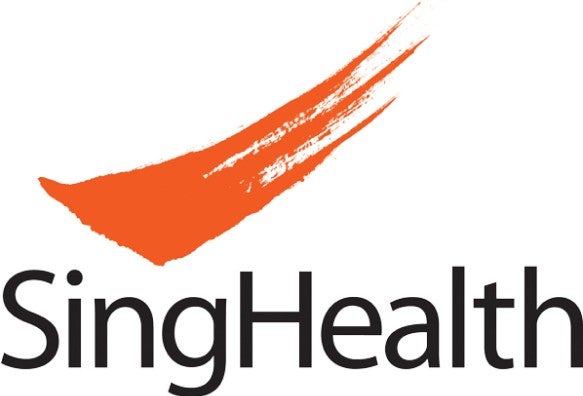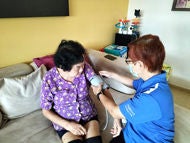What is - Heart Attack (Myocardial Infarction)

Heart Attack: What You Should Know
Symptoms of Heart Attack (Myocardial Infarction)
Signs and symptoms
- Sudden onset of shortness of breath
- New onset of chest pain or discomfort at rest or with minimal exertion that lasts longer than 15 minutes
- Pain or discomfort in the arms, back, throat or jaw
- Cold sweat, nausea, dizziness or light-headedness typically associated with chest pain, discomfort or shortness of breath
- Fast or irregular heartbeat
Symptoms of a heart attack for women
- Discomfort in the neck, shoulder, upper back or stomach
- Nausea or vomiting
- Feeling faint or dizzy
- Shortness of breath
- Heartburn or indigestion
- Fatigue
- Coughing
- Heart ‘flutters’
Heart Attack (Myocardial Infarction) - How to prevent
- Exercising regularly:
Aerobic exercises, such as brisk walking, jogging, or swimming, are the best type of exercise for good heart health. If you are generally inactive and are unsure of the most suitable level of intensity for yourself, you can start with walking. Walking is the safest form of exercise and you can start with light or moderate intensity for a shorter duration (less than 10 min), with sessions spread out across the week.
Healthy adults should complete at least 150 minutes of moderate-intensity exercise (e.g. brisk walk) in a week. Please seek your doctor’s advice for suitable physical exercises that are tailored to your condition.
- Adopt a healthy diet:
Generally, consuming more whole grains, fruits, vegetables, and fish is beneficial while foods that are fried or processed should be reduced.
- Maintain a healthy weight:
Achieve and maintain a healthy Body Mass Index (BMI). The healthy BMI range for Asians is between 18.5 and 22.9 kg/m2.
- Have adequate amounts of sleep:
Get six to eight hours of sleep daily. Inadequate sleep (less than four hours) or excess sleep (more than 10 hours) has been linked to an increase in risk of coronary artery disease.
- Manage stress:
Stress can lead to an increase in blood pressure (hypertension) and unhealthy coping mechanisms such as unhealthy eating or substance abuse, all of which contribute to increased risk of a heart attack.
Exercising is a good form of stress relief. Practising breathing exercises or mindfulness can also help reduce your stress levels and in turn, your risks of suffering from a heart attack.
- Stop smoking, if you are smoking:
Smoking contributes to atherosclerosis and increases the risk of a heart attack. Many smoking cessation aids can improve your chances of success in trying to quit smoking. Speak to your doctor for help with quitting smoking.
Heart Attack (Myocardial Infarction) - Causes and Risk Factors
Causes

Coronary arteries, which supply the heart with oxygenated blood, can slowly narrow due to a build-up of plaque leading to angina. In a heart attack, there is a sudden plaque rupture leading to blood clot formation, blocking the artery.
In spite of the treatment given, there is still a 10% mortality rate in patients with a heart attack. This is usually caused by abnormal heart rhythm (ventricular fibrillation) due to electrical instability of the heart or heart failure due to a massive heart attack. Occasionally, the heart muscle can rupture after a heart attack and this is usually fatal.
Risk factors
Modifiable Risk Factors
- Smoking
Smokers face two to three times the risk of non-smokers for sudden cardiac death. Almost 40% of patients below the age of 65 who die of heart disease are smokers. Smoking also leads to stroke, high blood pressure, blood vessel disease, cancer and lung disease.
When a person smokes, the nicotine in the smoke speeds up his or her heart rate, raises the blood pressure and disturbs the flow of blood and air in the lungs. The carbon monoxide in the smoke lowers the amount of oxygen carried in the blood to the rest of the person’s body, including the heart and the brain. Tar and cancer-causing substances from the cigarettes are deposited in the airways and lungs. Smoking also causes a decrease in HDL-cholesterol (‘good’ cholesterol), increasing risks of heart disease.
- High blood pressure
High blood pressure (also known as hypertension) is one of the major risk factors for coronary heart disease and cerebrovascular diseases, such as stroke. Left untreated, hypertension can also cause heart failure or lead to the rupture of blood vessels in the brain.
Hypertension usually occurs without any symptoms. Over time, it can lead to damage to the heart and blood vessels, resulting in a stroke or heart attack. When one’s blood pressure is extremely high, headaches, dizziness or alterations in vision might be experienced.
Anyone above the age of 40 should check their blood pressure, at least once a year. Marginally elevated blood pressure may normalise when you lose weight, exercise more and reduce salt intake. If these measures are not successful, then medication may be necessary. However, once the course of medication has started, it is essential to continue with the treatment, while leading a healthy lifestyle. Treatment of hypertension is usually life-long.
Learn more about managing high blood pressure.
- High cholesterol
There are two types of cholesterol. Low-density lipoproteins (LDL) or ’bad’ cholesterol will increase the build-up of fats in the arteries. On the other hand, high-density lipoproteins (HDL) or ’good’ cholesterol removes excess cholesterol from the cells, before they are deposited as plaque in the arteries.
The goal is to keep your total cholesterol level as low as possible because any excess cholesterol in the blood may be deposited in the arteries. This build-up causes the arteries to harden and narrow, thus reducing or preventing blood flow to the heart.
Many individuals with high blood cholesterol are not aware of their own cholesterol levels due to the lack of symptoms. It is important to check your cholesterol level regularly. If it is high, it should be lowered to reduce your susceptibility to coronary heart disease. The desirable level of cholesterol depends on your pre-existing risk for coronary heart disease.
Learn more about managing cholesterol.
- Diabetes
Diabetes mellitus is a chronic illness. People with diabetes are two to four times more likely to develop coronary artery disease and stroke. It is often associated with other cardiovascular risk factors, such as high blood pressure, increased total cholesterol and triglyceride levels, decreased HDL (‘good’ cholesterol levels) and obesity.
Maintaining a healthy weight, a balanced diet and having a regular exercise routine can help regulate one’s blood glucose level, preventing the onset of diabetes mellitus.
- Obesity
People who have excess body fat – especially located around the waist – are more prone to developing heart disease and stroke even if they have no other risk factors. Excess weight increases the strain on the heart. It also lowers HDL (‘good’ cholesterol levels), raises blood pressure, blood cholesterol and triglyceride levels. It is also associated with the development of diabetes mellitus.
While family history does contribute to obesity, one’s environment and lifestyle play crucial roles in this condition as well. Body fat increases when you consume more food calories than you require over a long period of time. Physical inactivity and a high-fat diet also contribute to obesity.
Weight control (fat loss) is possible by decreasing food intake and increased physical activity. Increased physical activity burns more calories which results in a decrease in body weight. Going on a diet can also reduce body weight, which leads to a decrease in blood pressure, blood glucose and blood cholesterol levels.
- Lack of exercise
An inactive lifestyle is a risk factor for coronary heart disease. Regular physical activity helps prevent heart and blood vessel disease, whereby exercise may lead to improvements in other cardiovascular risk factors, such as weight loss, lower blood pressure, decreased stress, and improved cholesterol levels. Moderate intensity activities help if done regularly and in the long run.
Exercise programmes should start at a slow pace and build up gradually to avoid injuring your muscles and ligaments. People with known coronary artery disease or those above 40 years of age, who have been inactive, should seek medical advice before starting a regular exercise programme.
- Stress
Your blood pressure goes up momentarily when you get angry, excited, frightened or are under stress. If you are constantly stressed over a prolonged period, you may be at a higher risk of developing high blood pressure.
Stress may cause palpitation, headaches, insomnia and problems with digestion. Prolonged stress may contribute to a heart attack. Emotional stress and tension also cause the body to produce adrenaline. This makes the heart pump faster and harder, which may cause the blood vessels to narrow.
Non-Modifiable Risk Factors
- Age
Age increases a person’s susceptibility to heart disease. For women, the effects of menopause, including the loss of the hormone oestrogen, appear to increase their risks of coronary heart disease and stroke.
- Gender
Men are three to five times more likely to have coronary heart disease than women. However, the risk for women increases after menopause. The risk of coronary heart disease in women increases to almost the same rate as for men approximately five to ten years after menopause.
- Ethnicity
The risk for coronary heart disease varies with different ethnic groups. A study done in Singapore shows that the likelihood of coronary heart disease is highest amongst South Asians. Compared with the Chinese, South Asians are three times, and Malays are two times more likely to suffer from coronary heart disease.
- Hereditary
You can be at a higher risk of having heart disease if your immediate family members (parents, children, brothers and sisters) have a history of premature heart disease. Certain risk factors (for example high blood pressure) tend to run in some families as well. If there is a history of heart disease in the family, one should place more emphasis on controlling the risk factors for heart disease.
- Menopause
Many women before the age of menopause seem to be partially protected from coronary heart disease, heart attack and stroke due to their high levels of oestrogen. However, women’s loss of natural oestrogen as they age may contribute to a higher risk of heart disease and stroke after menopause.
After menopause, women have a greater disadvantage in their biochemical profile, which includes triglyceride or very low-density lipoprotein (VLDL) cholesterol level, and LDL (‘bad’ cholesterol). These changes make women more susceptible to developing coronary heart disease. Management of these risk factors becomes more important. If menopause is caused by surgery to remove the uterus and ovaries, the risk rises sharply.
If menopause occurs naturally, the risk rises gradually. However, routine hormone replacement for women who have undergone natural menopause does not prevent heart disease.
Diagnosis of Heart Attack (Myocardial Infarction)
The diagnosis of heart attack is based on three findings:
Treatment for Heart Attack (Myocardial Infarction)
An early diagnosis is crucial to the treatment of a heart attack as it allows interventional cardiologists to open up the blocked artery quickly and effectively to minimise the extent of damage to the heart muscle. Currently, there are two treatment options to remove the blockage in the artery. The fastest way to treat a heart attack is to give a powerful blood-thinning medication (thrombolytic agents) to dissolve the clot and therefore remove the blockage in the artery. Any qualified physician can administer this immediately upon diagnosis of a heart attack. However, it is only effective in slightly more than 50% of the patients and may cause serious bleeding complications in other areas, including the brain.
A more effective way to unblock the artery is by inserting a balloon or stent through a small puncture in the groin or wrist to open up the artery This procedure is known as coronary angioplasty and has been successful in more than 90% of the cases. However, this is a procedure needs to be performed in the procedure suite or catheterisation laboratory and requires experienced operators. At the National Heart Centre Singapore (NHCS), emergency angioplasty for patients who are admitted for heart attack is available round the clock.

A balloon is inserted into the narrowed or blocked artery through a stent and inflated
Heart Attack (Myocardial Infarction) - Other Information
What to do in a heart attack
As a heart attack is serious and can be fatal, immediate medical attention should be sought when one experiences any sort of chest pain or discomfort which is not relieved by rest or medication.
One should follow the following steps when encountering a heart attack episode:
- Recognise the warning signs of a heart attack.
- Call 995 for an ambulance.
- Do inform someone of the situation and have someone keep watch on the patient.
- Get the patient to stop all activity, sit or lie down, and wait for transport to the nearest hospital. The patient should not drive to the hospital.
Preparing for the coronary angioplasty procedure
- Inform your doctor of any drug allergies, especially allergies to seafood, pain relief medications, chest X-rays, iodine and contrast mediums.
- Inform your doctor of your medical history and the medications you are currently taking.
What to do after a heart attack
1) Cardiac Rehabilitation

This is a structured programme aimed at helping heart attack patients gradually improve their cardiovascular fitness, and enhance their psychological well-being, thus enabling them to resume a normal lifestyle. It also aims to modify their risk factors and reduce the risk of another heart attack.
-
Exercise training: A customised exercise programme to safely improve cardiovascular fitness.
-
Health education: To provide the patient and family members with information on heart attack, its signs and symptoms and its risk factors.
-
Risk factor and behaviour modification: Practical steps in risk factor and behaviour modification will be taught. People who smoke are strongly encouraged to stop and are given advice on how to do so. Stress management is also important.
-
Dietary modification: The patient will be advised to adopt a healthy diet. For instance, food high in cholesterol and saturated fats such as animal fats, whole milk products, eggs, red meats (beef, lamb), coconut oil and palm oil are to be avoided. Healthy food alternatives will be introduced, e.g. low-fat milk or lean meats. Healthy food preparation alternatives will also be introduced to the patient or family members. For example, the use of canola or olive oil and boiling or steaming food instead of frying.
2) Medicines

Medicine will be prescribed to a heart attack patient to:
- Reduce the risk of a second heart attack
- Relieve chest pain.
- Control risk factors like diabetes, high blood pressure or high cholesterol.
When can a heart attack patient return to normal activities
-
Work
This depends on the nature of a patient’s work. If the work is not physically demanding, the patient can resume work in a few weeks. For a physically demanding or stressful job, the patient may need up to three months away from work. The patient should consult his/her cardiologist regarding his/her suitability for resuming work.
-
Driving
The patient should consult with his/her cardiologist regarding his/her suitability for driving, especially if one drives commercial vehicles.
Many patients will be able to drive within three to five weeks after the heart attack if they recover well with no complications. However it is best for someone to accompany the patient initially.
-
Sports
After a heart attack, patients are advised to have adequate rest. The road to recovery of cardiovascular fitness is gradual. The intensity of exercise should be gradually increased.
The patient may start exercise walking on flat ground in the third week after the heart attack, and may start climbing or do gentle uphill walking from the fourth week. Normal brisk walking can usually resume in about three months.
If a patient experiences chest pain, discomfort or shortness of breath while walking, they should slow down and stop. Report the symptoms to the doctor. The patient should consult his/her cardiologist regarding the specific time frame for resuming normal sporting activities.
Videos
Heart Attack: A Patient's Guide to Coping After Discharge
When A Heart Attack Happens
Related Health Articles from National Heart Centre Singapore (NHCS)
The information provided is not intended as medical advice. Terms of use. Information provided by SingHealth.
Condition Treated At
Department
Cardiology
Department
Emergency Medicine
Department
Cardiology
Department
Physiotherapy
Department
Department of Cardiology (Division of Med)
Department
NHCS Cardiology @ SKH
Get to know our doctors at SingHealth Hospitals in Singapore.
Get to know our doctors at SingHealth Hospitals in Singapore. here.





















